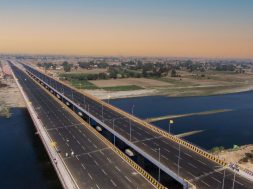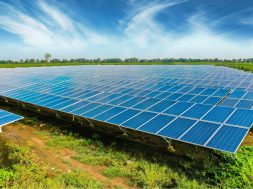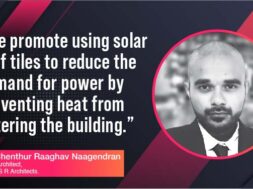Composite monoliths: the smarter way to buildThe winning attributes which are the answers to the need for faster construction, stronger structures and consistently higher quality finishesMonolithic construction has been prevalent in the industry for centuries, beginning with clay houses and compacted earth forms to using concrete monolithic forms as the method used today. This method of building and the use of technology and materials, which aid faster and stronger construction, have made it possible to cater to the ever-growing demand for new-age housing.
Concrete is the most common artificial composite material of all and has been the predominant building material in the modern age due to its longevity, formability and ease of transport. However, due to its low-tensile strength,it has certain limitations.
Composite monoliths employ the use of more than one material to create monolithic structures or monolithic building blocks. The materials used to create these blocks range from clay and mud to the ubiquitous concrete, which has been the most commonly used form of composite monoliths, until very recently.
In recent times, however, alternate building materials are shaping the future of the industry to provide the same qualities as concrete. Fibre reinforced polymers or FRP materials in conjunction with a variety of structural elements are being accepted more and more over the world as the construction alternative of the future.
inpod is the first to introduce a fully composite monolithic modular building system that does not use conventional materials for structural strength. inpod structures are made with a specially developed composite material inskin, adapted from the yacht building industry, coupled with technology from aviation and processes from the automobile industry. The result then is inarguably the most lightweight, yet strong structures seen so far.
Structures qualitiesFire resistanceThe inskin composite parts that constitute the main building parts of inpod comply with German type A test. High density PU provides high resistance from fire. Tests indicate that inpod buildings will sustain their structural integrity and restrict the fire from spreading beyond initial area, even after exposure to extreme temperatures of 1,250 C over a period of 30 minutes.Attack resistanceinskin composite parts have been tested by repeatedly shooting a 6-foot rod through a cannon at 60 feet per second. After repeated assaults on the same area, there is no penetration, thus proving it safe against flying debris.Heat insulationComposite monoliths made using inskin are among the most energy-efficient construction modules with an acoustic absorption index of 28db, and their heat insulation parameter of 0.04 w/mk easily exceeds that of conventional buildings. Besides, the highly insular nature of PU blocks the atmospheric heat and regulates the interior temperatures with minimum outside help, thus making these inherently green buildings.Water ResistanceManufacturing process of inpod uses materials used for yacht building, thus making it ideal for use even in coastal areas with high saline content as algae, fungi and osmosis have no effect on them.Hurricane resistanceWeighing in at 6 kg/sq. metres inskin material is lighter than timber yet stronger than concrete. As a result, monolithic structures made from it are four times stronger than their RCC counterparts and resistant to winds of upto 300kmph.Earthquake resistanceThe unique joinery employed in the manufacturing of inpod modules provides the structures with incredible strength. As a result, inpod structures can withstand seismic events four times higher than conventional structures. Tests show that buildings made from composites will retain structural integrity on deflection of upto 20 per cent.Other qualitiesThe process (assembly line manufacturing) used in the making of inpods ensures the final product is extremely high quality and crack resistant with hygienic surface finishes, both external as well as internal.With all the winning attributes people need in the buildings of tomorrow, fully composite monolithic structures are the answers to the need for faster construction, stronger structures and consistently higher quality finishes.
12
Cookie Consent
We use cookies to personalize your experience. By continuing to visit this website you agree to our Terms & Conditions, Privacy Policy and Cookie Policy.









